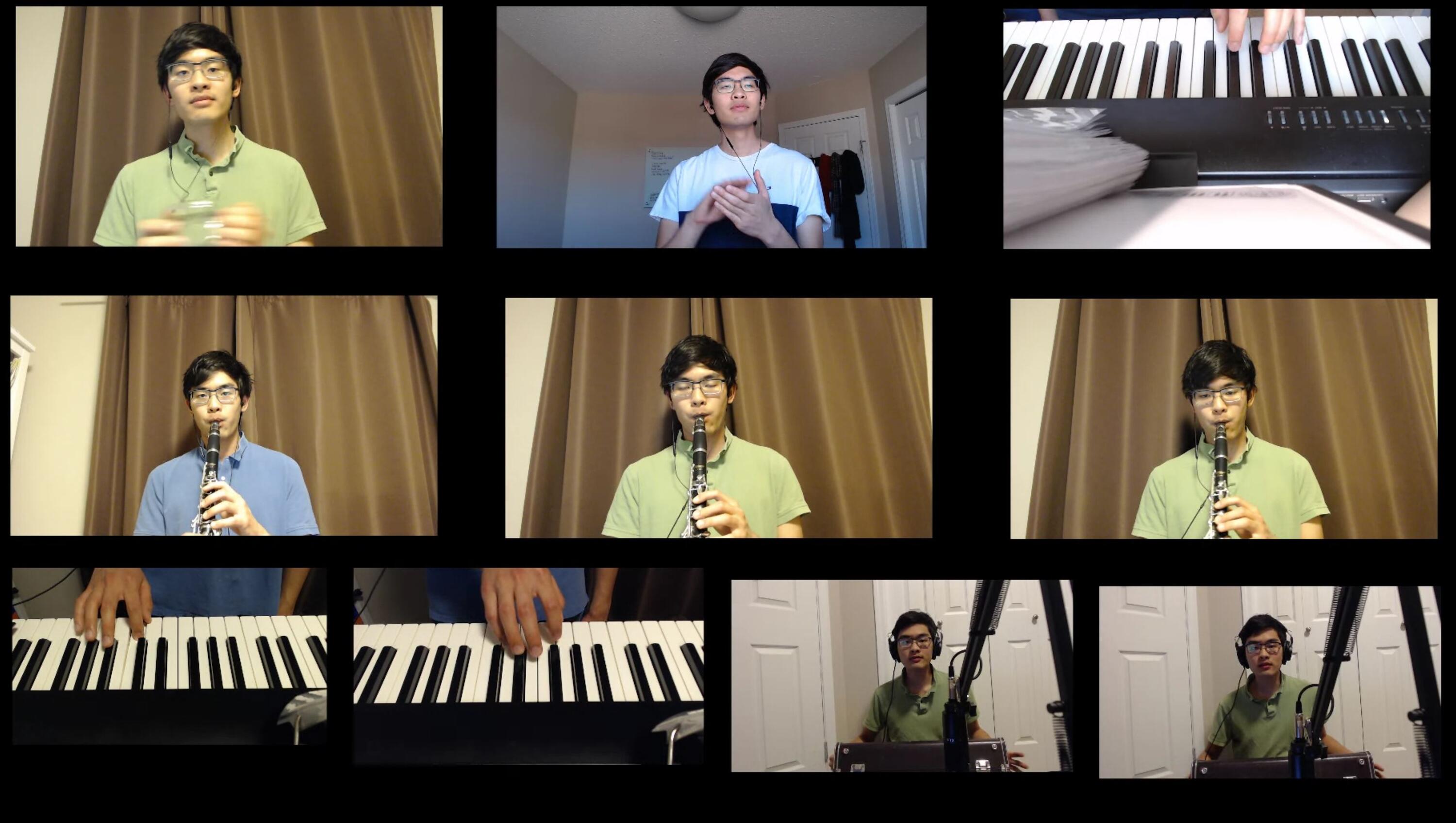The University of Waterloo offers a variety of instrumental and vocal ensembles through Grebel’s Music Department. Typically, these ensembles practice together in person, but with the COVID-19 pandemic, music directors have been driven to change from a traditional in-person format to a far more challenging online experience. However, technology has allowed the music ensembles to practice and learn together, record individual students, and compile those tracks to create beautiful music.
In Jazz Ensemble, students are diving deeply into the three pieces the ensemble is learning this term. They study the harmonic structure, melodic analysis, and the composer. Michael Wood, the ensemble director, explained that “this allows new students and previous band members to achieve progress at their present playing ability.” He added that during their online classes, “the chat tab lets students connect with one another or myself during the session. Students also follow up after our class. It is gratifying to see students stay around for 20 minutes after class.”
 The Balinese Chamber Gamelan is also focusing on theory and culture of the music but taking a different approach. “Instead of learning and performing one part of each piece,” stated student Chen Chai (pictured above), “we individually learn all the parts and put them together into a music video.” Chen explained that participating in this group was a unique and creative experience as “most of the students don’t have actual Balinese Gamelan instruments at home, so when playing the parts, there’s a lot of creative freedom and innovation in choosing how to reproduce the sounds.”
The Balinese Chamber Gamelan is also focusing on theory and culture of the music but taking a different approach. “Instead of learning and performing one part of each piece,” stated student Chen Chai (pictured above), “we individually learn all the parts and put them together into a music video.” Chen explained that participating in this group was a unique and creative experience as “most of the students don’t have actual Balinese Gamelan instruments at home, so when playing the parts, there’s a lot of creative freedom and innovation in choosing how to reproduce the sounds.”
Choirs@UWaterloo is a new combination of Chamber Choir and University Choir. Choirs@ UWaterloo and Chapel Choir are both using Soundtrap, an online platform for music that allows multiple people to collaborate on pieces and compile individual tracks. The choirs have online rehearsals with everyone muted to minimize sound and connection inconsistencies. Niki Wibisono, a student in Choirs@UWaterloo, said that not hearing others during practice “gives me a chance to develop my skills as I only have myself to rely on.” She added, “the most fun part is when we record ourselves and we hear the end result where I can feel the connection between all members of the choir.”
Teaching Through A Screen
“The biggest change,” said Karen Sunabacka, an Associate Professor of Music at Grebel, “is trying to teach the materials in a series of videos. I have to be precise and short!”
The Chapel Choir practices online together to work on technique and posture. Then they break into smaller groups to check in about the music, music projects, and life. Assistant Music Professor Kate Steiner, Chapel Choir director, said, “the biggest moment of innovation so far is putting together ‘Let all the earth’ by Roger Holland, which featured several soloists. Students even added instrumental parts.”
Though these online ensembles may not be the perfect replacement for in-person ensembles, leaders and students have risen to the challenge posed by COVID-19 and continue to make music together with technology and creativity.







